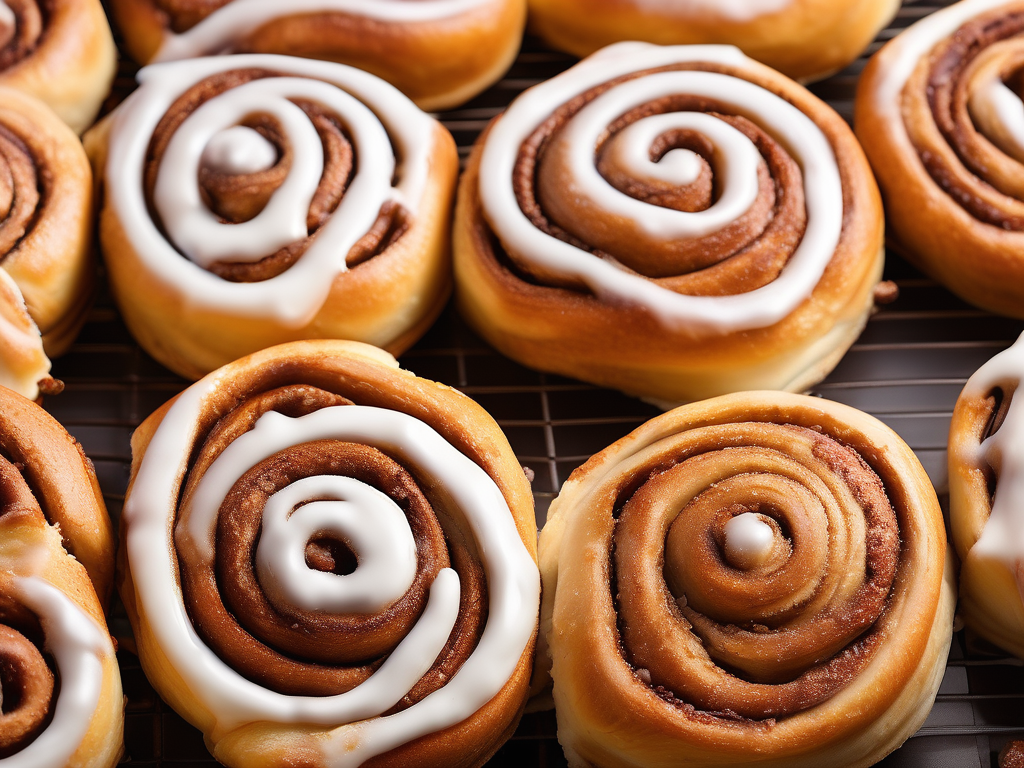
How to Properly Store Leftover Cinnamon Rolls for Freshness
Get Your Free Food Safety Cheat Sheet
30 most common foods with instant answers. Print it and stick it on your fridge—completely free!
How to Properly Store Leftover Cinnamon Rolls for Freshness
When it comes to delicious treats like [cinnamon rolls](/food/cinnamon rolls), it's common to have leftovers that you want to save for later. Proper storage is key to maintaining their freshness and flavor. In this guide, we'll explore the best practices for storing leftover cinnamon rolls to ensure they stay delicious for as long as possible. (Cinnamon rolls)
Why Proper Storage Matters
Properly storing leftover cinnamon rolls is essential for several reasons:
- Maintaining Freshness: Storing cinnamon rolls correctly helps retain their freshness and prevents them from drying out or becoming stale.
- Preventing Spoilage: Proper storage helps prevent the growth of harmful bacteria that can lead to foodborne illnesses.
- Preserving Flavor: Storing cinnamon rolls properly preserves their flavor and texture, ensuring they taste just as delicious when you're ready to enjoy them again.
Tips for Storing Leftover Cinnamon Rolls
1. Allow the Cinnamon Rolls to Cool Completely
Before storing leftover cinnamon rolls, make sure they have cooled completely. Storing warm cinnamon rolls can create excess moisture, leading to a soggy texture and potential mold growth.
2. Choose the Right Storage Container
When storing cinnamon rolls, opt for an airtight container or resealable bag to keep them fresh. Avoid using containers that are too large, as excess air inside the container can cause the rolls to dry out.
3. Refrigerate or Freeze Promptly
For short-term storage (up to 2-3 days), you can store cinnamon rolls in the refrigerator. For longer storage, consider freezing them. Properly wrapped cinnamon rolls can last in the freezer for up to 1-2 months without compromising their quality.
4. Wrap the Cinnamon Rolls Properly
Wrap individual cinnamon rolls or the entire batch tightly in plastic wrap or aluminum foil before placing them in a storage container. This helps prevent air exposure and keeps the rolls moist and fresh.
5. Label and Date the Storage Container
To keep track of how long the cinnamon rolls have been stored, label the container with the date when they were stored. This will help you determine their freshness and quality when you're ready to enjoy them.
6. Reheat Cinnamon Rolls Properly
When you're ready to enjoy your leftover cinnamon rolls, reheat them in the oven or toaster oven for the best results. Avoid microwaving them, as this can result in a soggy texture.
Safety Precautions for Storing Cinnamon Rolls
1. Avoid Keeping Cinnamon Rolls at Room Temperature
Leaving cinnamon rolls at room temperature for an extended period can promote the growth of harmful bacteria. Always store leftover cinnamon rolls in the refrigerator or freezer to maintain their freshness and safety.
2. Check for Signs of Spoilage
Before consuming leftover cinnamon rolls, inspect them for any signs of spoilage, such as mold, off smells, or unusual textures. If in doubt, it's best to discard them to avoid the risk of foodborne illness.
3. Practice Proper Hygiene
When handling leftover cinnamon rolls, wash your hands thoroughly before and after touching the food. Additionally, ensure that all storage containers and utensils are clean and sanitized to prevent cross-contamination.
Conclusion
Properly storing leftover cinnamon rolls is crucial for maintaining their freshness, flavor, and safety. By following the tips outlined in this guide, you can enjoy your favorite treats for longer periods without compromising their quality. Remember to cool the cinnamon rolls before storing, choose appropriate storage containers, label them correctly, and reheat them properly when ready to enjoy. By practicing good food safety habits, you can savor every bite of those delicious cinnamon rolls without any worries. (Cinnamon rolls)
Related Posts
Here are some other articles you might find helpful:
Authoritative Food Safety References
These agencies and university labs inform every tip and health precaution we publish.
USDA FoodKeeper – Cold Storage Guidelines
Official refrigerator, freezer, and pantry timelines maintained by the U.S. Department of Agriculture.
Visit USDA FoodKeeperFDA Produce Safety Rule & Grower Guidance
Field-to-fridge handling practices that prevent contamination of fruits, vegetables, and leafy greens.
Visit FDA Produce SafetyCDC Foodborne Illness Prevention Hub
Surveillance-backed guidance on pathogens, symptoms, and steps to reduce foodborne illness risk.
Visit CDC Food SafetyUC Davis Postharvest Technology Center
University research detailing optimal storage atmospheres for produce after harvest.
Visit UC Davis PostharvestPenn State Extension – Home Food Preservation & Safety
Peer-reviewed extension bulletins on safe canning, chilling, and reheating practices.
Visit Penn State ExtensionGet Your Free Food Safety Cheat Sheet
30 most common foods with instant answers. Print it and stick it on your fridge—completely free! Want more? Upgrade to the complete guide with 70+ foods.
Scan your food directly and get instant safety info using our AI-powered camera feature.